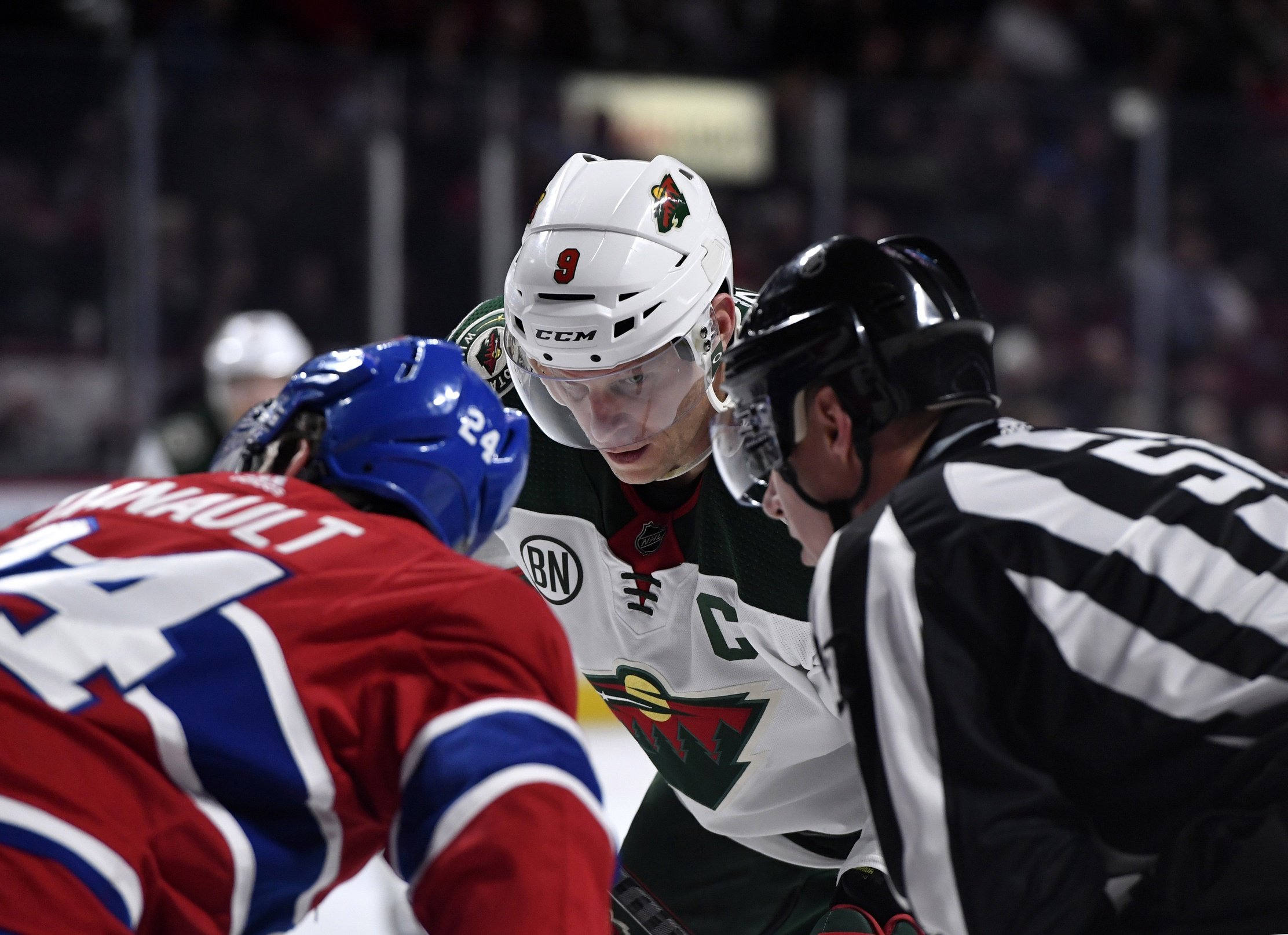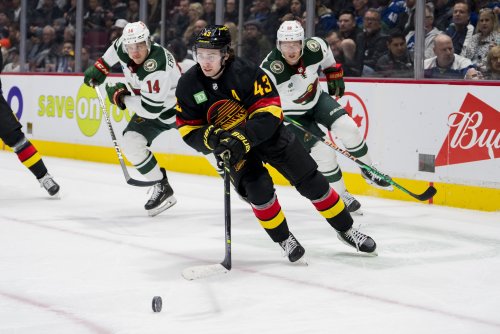
Now that Mikko Koivu’s hung up his skates, we can guess pretty well what his post-playing career looks like. His No. 9 will be hoisted to the rafters soon after fans can return to the Xcel Energy Center. He’ll likely pick up some sort of gig in the Wild front office. He’ll be a staple of Wild alumni teams and future retirement ceremonies.
And that’ll be it. As time passes, Koivu will have a devoted following across Minnesota and Finland, but around the league? The smart money says he’ll be a guy who’ll make most people say, “Oh, yeah, he had a nice career.”
In other words, he’s destined to be overlooked by the hockey world. It’s nothing new for him. He spent the peak of his career toiling on some truly brutal Wild teams. Zach Parise, Ryan Suter, and a wealth of up-and-comers gave him a supporting cast in 2012, but with the Wild always outside contender status, Koivu’s talents went largely ignored.
It’s a shame, as this means that we’re ignoring one of the best defensive centers of his era. We won’t be doing that today. It’s time to plead one last case to give Koivu the recognition he lacked during his playing career. This is Mikko Koivu’s Hall of Fame Case.
The Defense Doesn’t Rest
Koivu’s case starts with the fact that his defense was not merely good, or even great, but extraordinary. Thanks to shot data that dates back to the 2007-08 season when Koivu was 24 and in his third year, we can compare him to the rest of the league and see that he pops off the charts.
A total of 424 forwards have logged 4,000 5-on-5 minutes since 2007-08. In that time, Koivu surrendered only 1.97 goals per game, 26th in the NHL (94th percentile). If you look at shot suppression, he ranks 11th among that group. When you adjust it for shot quality, he leads the league, allowing only 1.8 expected goals per hour.
His defense was the foundation of his game, and of the Wild itself. It allowed him to consistently tilt the ice in Minnesota’s favor, even when his supporting cast was dreadful. Once he got help during the Parise-Suter Era, he took off. Since 2012-13, Koivu has controlled 57.4% of the expected goals at 5-on-5, behind only Andrei Svechnikov and Patrice Bergeron.
This helped him make his teammates better to an almost absurd degree. Here’s every forward who played 1,000-plus 5-on-5 minutes with Koivu, and how they controlled play with and without him.

There’s a distinct pattern here. If you were bad at driving play, Koivu would lift you to respectability. If you were good at it, he made you great.
Let’s also not forget Koivu’s offensive capabilities. There are 31 forwards who allowed fewer than two goals per hour at 5-on-5 since 2007-08. During that time, Koivu’s had 0.72 points per game, which ranks fifth among that group. The players ahead of him? Pavel Datsyuk, Vladimir Tarasenko, Marian Hossa, and Joe Pavelski. Not bad company to be in.
He Deserved a Selke
A major strike against Koivu’s case will be the lack of any league awards. This includes the Selke Trophy, which is awarded to the best defensive forward each year. It’s fair to ask why Koivu didn’t win an award tailor-made to his skill set.
There are a few reasons for this. The first is that Koivu was playing in the league at the same time as Datsyuk and Patrice Bergeron. Both of them are elite defensive centers who scored more points than Koivu and won Stanley Cups for historic franchises. They’ve combined for seven of the last 13 Selkes, and deservedly so.
The other is some sort of combination of a lack of information and a lack of interest. Advanced stats like Corsi, expected goals, and Evolving Hockey’s Goals Above Replacement have only come into being in recent years. Outside of these advanced metrics, there’s not much you can do to quantify defense other than look at the incredibly flawed plus/minus statistic.
This has left Selke voting in the hands of journalists relying mostly on the eye test. That inherently will be biased towards star players in big markets, and against players on teams universally known as “boring.”
But we’ve got the numbers, so let’s use them. According to Evolving Hockey’s GAR model, Koivu’s even-strength defense has led the league since 2007. Let’s stack his numbers up against the rest of his contemporaries, who I’m defining as “Everyone with multiple top-three Selke finishes since 2007.”

Datsyuk is the clear No. 1 here, but Koivu’s a solid second place, with his even-strength defense being worth about a full win in the standings every 82 games. His defense was much more consistently impactful than anyone not named Datsyuk or Bergeron. Koivu finished as a Selke finalist just once but had his defensive impact exceed that of a Selke winner in four of the past 13 years.
There’s a very good chance we’ll look back at this as one of the era’s biggest oversights in awards voting. As such, Koivu’s lack of a Selke Trophy shouldn’t be held against him.
Enshrine More Guys
Lastly, we have to ask who the Hall of Fame is for. Let’s look at the MLB Hall of Fame, for example. In addition to the absolute legends of the sport, there’s room in there for players who were specialists. You can find designated hitters, defensive shortstops, and relief pitchers there. They weren’t as valuable as the best of the best, but they had a job, and they crushed it.
What’s more, the Hockey Hall of Fame has also honored Koivu-type players. The most notable examples are Guy Carbonneau and Bob Gainey. Carbonneau scored a mere 0.50 points per game over his career, and Gainey had even less (0.43). Much less offensive punch than Koivu, and that’s before accounting for them playing in the high-flying '80s.
What they did have was a reputation for being the best defensive forwards of their era, with seven Selkes combined. No doubt, their reputations were earned, but they also got the attention from playing on winning teams in the NHL’s most storied market. Since their retirement, the Hall has been off-limits to defensive players, unless they also score a lot.
How much sense does it make to limit the Hall to recognizing two — and only two — defensive specialists? The Hall enshrined Gainey and Carbonneau because you can’t paint a picture of hockey in their eras without mentioning them. Their role was important, and they were the best at it.
That should also apply to this past decade, and you can’t talk about the best defensive forwards without mentioning Koivu. Or, you’d think not. The Pro Hockey Writers’ Association already spent Koivu’s entire career telling the story of the NHL without highlighting his defense.
Don’t count on him getting in, but the PHWA should consider giving him some long-due credit in three years.
Think you could write a story like this? Hockey Wilderness wants you to develop your voice, find an audience, and we'll pay you to do it. Just fill out this form.








Recommended Comments
Join the conversation
You can post now and register later. If you have an account, sign in now to post with your account.
Note: Your post will require moderator approval before it will be visible.